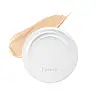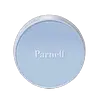What's inside
What's inside
 Key Ingredients
Key Ingredients

 Benefits
Benefits

 Concerns
Concerns

 Ingredients Side-by-side
Ingredients Side-by-side

Centella Asiatica Extract
CleansingCI 77891
Cosmetic ColorantPhenyl Trimethicone
Skin ConditioningDimethicone
EmollientMethyl Trimethicone
Skin ConditioningPropanediol
SolventDiisostearyl Malate
EmollientGlycerin
HumectantTridecyl Trimellitate
EmollientLauryl Polyglyceryl-3 Polydimethylsiloxyethyl Dimethicone
Skin ConditioningCaprylyl Methicone
Skin ConditioningTrimethylsiloxysilicate
EmollientMica
Cosmetic Colorant1,2-Hexanediol
Skin ConditioningHoney Extract
HumectantRosmarinus Officinalis Leaf Oil
MaskingLeptospermum Scoparium Leaf Extract
Skin ConditioningPolyglyceryl-4 Isostearate
EmulsifyingMagnesium Sulfate
Water
Skin ConditioningDisteardimonium Hectorite
StabilisingGlyceryl Caprylate
EmollientButylene Glycol
HumectantStearic Acid
CleansingAluminum Hydroxide
EmollientAlumina
AbrasiveTriethoxycaprylylsilane
Lactobacillus
Skin ConditioningAcrylates/Dimethicone Copolymer
Skin ConditioningTrisodium Ethylenediamine Disuccinate
Ceramide NP
Skin ConditioningMadecassoside
AntioxidantPhytosphingosine
Skin ConditioningTocopherol
AntioxidantCI 77492
Cosmetic ColorantCI 77491
Cosmetic ColorantCI 77499
Cosmetic ColorantCentella Asiatica Extract, CI 77891, Phenyl Trimethicone, Dimethicone, Methyl Trimethicone, Propanediol, Diisostearyl Malate, Glycerin, Tridecyl Trimellitate, Lauryl Polyglyceryl-3 Polydimethylsiloxyethyl Dimethicone, Caprylyl Methicone, Trimethylsiloxysilicate, Mica, 1,2-Hexanediol, Honey Extract, Rosmarinus Officinalis Leaf Oil, Leptospermum Scoparium Leaf Extract, Polyglyceryl-4 Isostearate, Magnesium Sulfate, Water, Disteardimonium Hectorite, Glyceryl Caprylate, Butylene Glycol, Stearic Acid, Aluminum Hydroxide, Alumina, Triethoxycaprylylsilane, Lactobacillus, Acrylates/Dimethicone Copolymer, Trisodium Ethylenediamine Disuccinate, Ceramide NP, Madecassoside, Phytosphingosine, Tocopherol, CI 77492, CI 77491, CI 77499
Water
Skin Conditioning1,2-Hexanediol
Skin ConditioningButylene Glycol
HumectantXanthan Gum
EmulsifyingDisodium EDTA
Silica
AbrasiveAluminum Starch Octenylsuccinate
AbsorbentDimethicone
EmollientBentonite
AbsorbentEthylhexylglycerin
Skin ConditioningHydrolyzed Collagen
EmollientBifida Ferment Lysate
Skin ConditioningLactobacillus Ferment
Skin ConditioningPseudoalteromonas Ferment Extract
HumectantSodium Hyaluronate
HumectantTocopherol
AntioxidantHydrolyzed Elastin
EmollientWater, 1,2-Hexanediol, Butylene Glycol, Xanthan Gum, Disodium EDTA, Silica, Aluminum Starch Octenylsuccinate, Dimethicone, Bentonite, Ethylhexylglycerin, Hydrolyzed Collagen, Bifida Ferment Lysate, Lactobacillus Ferment, Pseudoalteromonas Ferment Extract, Sodium Hyaluronate, Tocopherol, Hydrolyzed Elastin
 Reviews
Reviews

Ingredients Explained
These ingredients are found in both products.
Ingredients higher up in an ingredient list are typically present in a larger amount.
1,2-Hexanediol is a synthetic liquid and another multi-functional powerhouse.
It is a:
- Humectant, drawing moisture into the skin
- Emollient, helping to soften skin
- Solvent, dispersing and stabilizing formulas
- Preservative booster, enhancing the antimicrobial activity of other preservatives
Butylene Glycol (or BG) is used within cosmetic products for a few different reasons:
Overall, Butylene Glycol is a safe and well-rounded ingredient that works well with other ingredients.
Though this ingredient works well with most skin types, some people with sensitive skin may experience a reaction such as allergic rashes, closed comedones, or itchiness.
Learn more about Butylene GlycolDimethicone is a type of synthetic silicone created from natural materials such as quartz.
What it does:
Dimethicone comes in different viscosities:
Depending on the viscosity, dimethicone has different properties.
Ingredients lists don't always show which type is used, so we recommend reaching out to the brand if you have questions about the viscosity.
This ingredient is unlikely to cause irritation because it does not get absorbed into skin. However, people with silicone allergies should be careful about using this ingredient.
Note: Dimethicone may contribute to pilling. This is because it is not oil or water soluble, so pilling may occur when layered with products. When mixed with heavy oils in a formula, the outcome is also quite greasy.
Learn more about DimethiconeTocopherol (also known as Vitamin E) is a common antioxidant used to help protect the skin from free-radicals and strengthen the skin barrier. It's also fat soluble - this means our skin is great at absorbing it.
Vitamin E also helps keep your natural skin lipids healthy. Your lipid skin barrier naturally consists of lipids, ceramides, and fatty acids. Vitamin E offers extra protection for your skin’s lipid barrier, keeping your skin healthy and nourished.
Another benefit is a bit of UV protection. Vitamin E helps reduce the damage caused by UVB rays. (It should not replace your sunscreen). Combining it with Vitamin C can decrease sunburned cells and hyperpigmentation after UV exposure.
You might have noticed Vitamin E + C often paired together. This is because it is great at stabilizing Vitamin C. Using the two together helps increase the effectiveness of both ingredients.
There are often claims that Vitamin E can reduce/prevent scarring, but these claims haven't been confirmed by scientific research.
Learn more about TocopherolWater. It's the most common cosmetic ingredient of all. You'll usually see it at the top of ingredient lists, meaning that it makes up the largest part of the product.
So why is it so popular? Water most often acts as a solvent - this means that it helps dissolve other ingredients into the formulation.
You'll also recognize water as that liquid we all need to stay alive. If you see this, drink a glass of water. Stay hydrated!
Learn more about Water